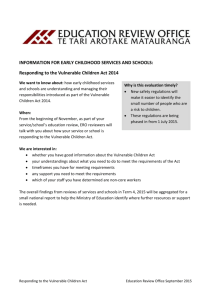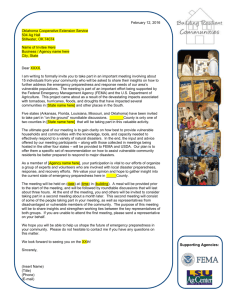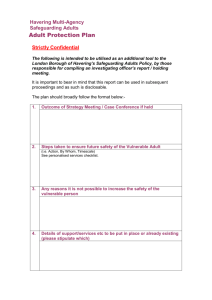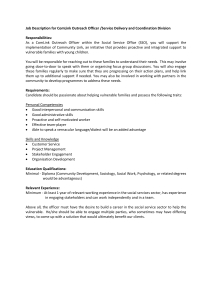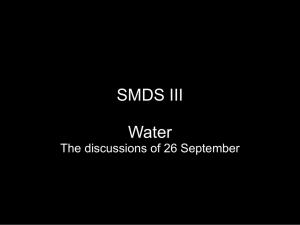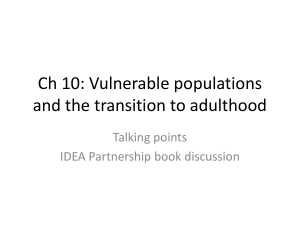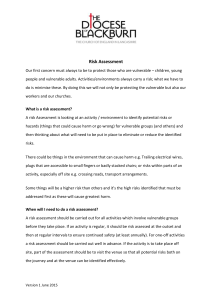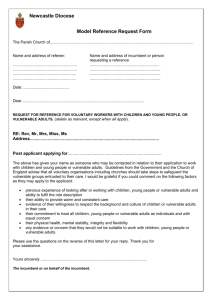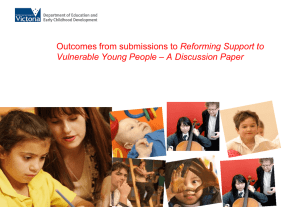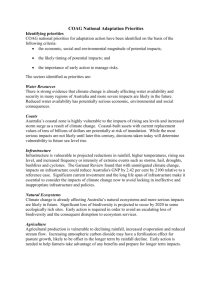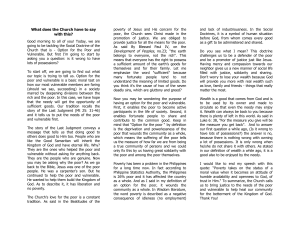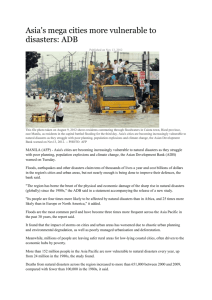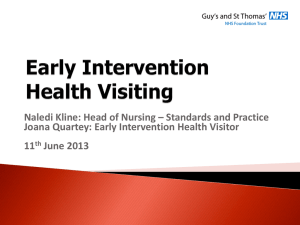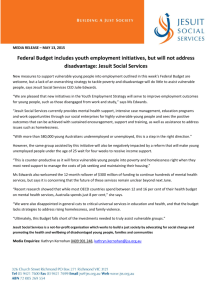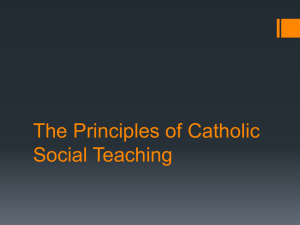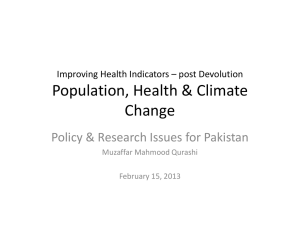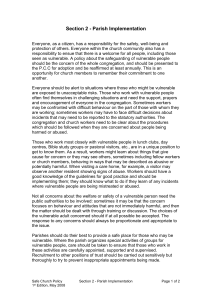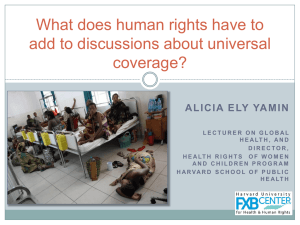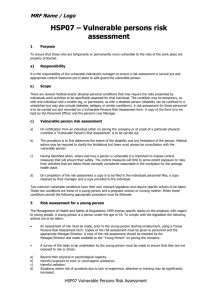What is monitoring?
advertisement
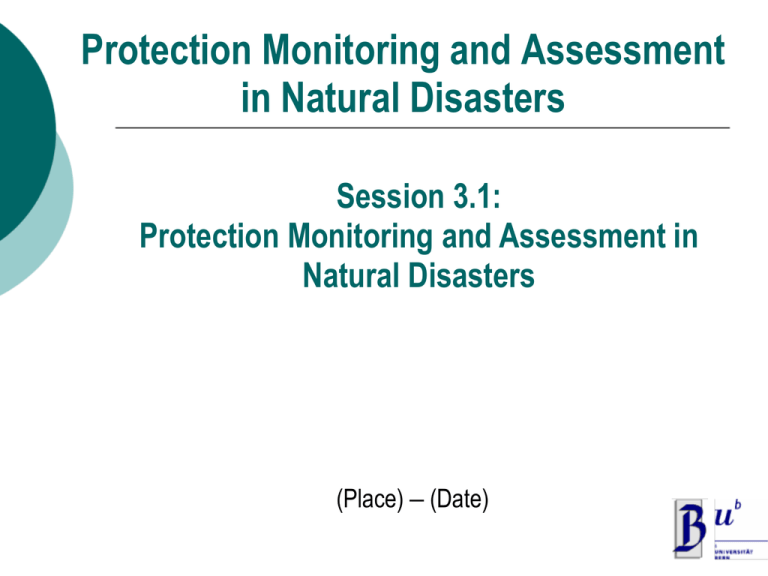
Protection Monitoring and Assessment in Natural Disasters Session 3.1: Protection Monitoring and Assessment in Natural Disasters (Place) – (Date) Overview • What is monitoring and why does it matter? • What are the principles of monitoring? • How can protection needs be assessed? • What groups should monitoring protection target? What is monitoring? Mount Merapi, Indonesia Picture: AP Photo/Gembong Nusantara, from: http://news.uk.msn.com/photos/special-photo-galleries/photos.aspx?cp-documentid=155105230&page=20 Why monitor? • Accountability • Results-orientation • Adaptability • Mitigation Why monitor? (cont.) • Needs based • Performance Management • Comprehensiveness • Equity What should be monitored? During the response phase: • Rights related to physical security, integrity and dignity • Rights related to basic necessities • Equal access to assistance or non-discrimination in aid provision During the recovery phase: • Rights related to economic, social and cultural protection needs • Rights related to civil and political protection needs • Equal access to assistance or non-discrimination in aid provision • Effectiveness of protection programs The essentials of monitoring • Aim: Collect data on vulnerable populations in hazard prone or affected areas to inform response • Method: Participation of the community; agency questionnaires/indicators • Expertise: Requires skilled professionals with specialist competencies Minimum standards for Protection • Prioritize safety and dignity of disaster affected persons and communities • Contextual analysis including protection risks • Equitability and impartiality • Consultation and participation • State has primary responsibility for protection • Prioritize vulnerable groups needs • Policies for advocacy response • Respond to human rights abuses Examples of common standards • Sphere Project Minimum Standards • Humanitarian Accountability Standard • Interagency Network for Education in Emergency Standards • Red Cross Code of Conduct • Good Enough Guide • Standards and Indicators in UNHCR Operation Implementing common standards for monitoring • Joint assessment mission • Joint monitoring mechanism – checklists and guidelines • Agency focal points • Start monitoring as soon as possible focusing on a few key elements • Broaden the scope as resources and time permit Vulnerable groups for special monitoring attention o o o o o o o o Children, especially infants Women Older people HIV/AIDS patients Internally displaced persons People with mental or physical disabilities Indigenous people Other marginalized groups Monitoring allows decision makers to see: • Protection status of different vulnerable target groups over time • Changes in social behavior patterns • Changes in migration/displacement movements • Positive and negative effects of the intervention Thinking beyond monitoring: • Be aware of community expectations • Ensure availability of mechanisms for redress • Support states’ assumption of responsibility for protection monitoring Questions? Thank you!
